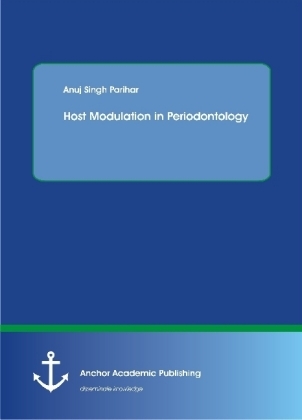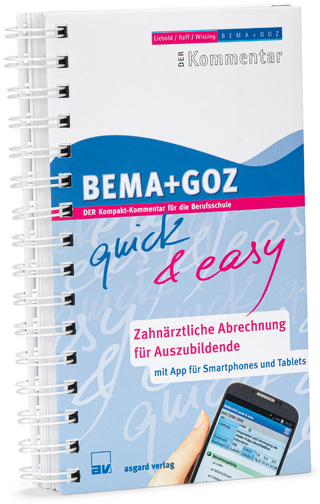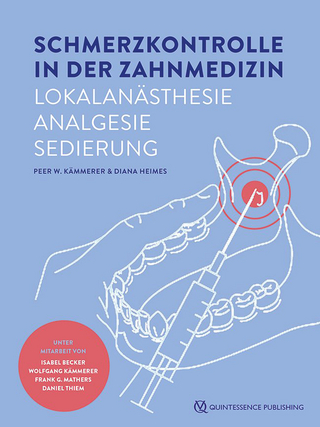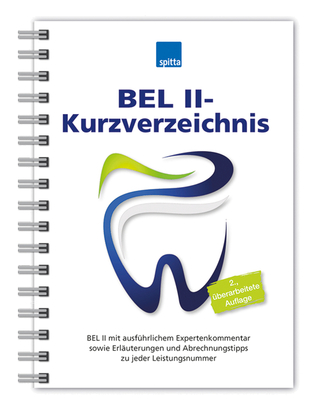
Host Modulation in Periodontology
Anchor Academic Publishing (Verlag)
978-3-95489-454-3 (ISBN)
Thus, it can be summarized that periodontopathogens are necessary to cause periodontal disease but they are not sufficient to cause the disease. In response to infectious or inflammatory disease, two distinct yet intricately linked immune responses occur - innate & adaptive. The immune system is essential and the body has to marshal the innate and adaptive responses in order to stave off infection. However, in inflammatory disease the response becomes chronic and tissues do not return to homeostasis. The development of an immune inflammatory response during periodontitis in susceptible individuals results in the local production of a variety of inflammatory mediators. The development of an immune inflammatory response during periodontitis in susceptible individuals results in the local production of a variety of inflammatory mediators. Pro-inflammatory cytokines molecules and the cytokine network play an essential role in the pathogenesis of periodontal diseases.
Therefore, the aim of this review is to provide comprehensive information and an update on various therapeutic methods to modify the host response as an adjunctive treatment for periodontitis.
Text Sample:
MODULATION OF HOST CYTOKINES:
Cytokines are defined as regulatory proteins controlling the survival, growth, differentiation and functions of cells. Cytokines are produced transiently at generally low concentrations, act and are degraded in a local environment. The pro-inflammatory cytokines like Interleukins (IL) and tumor necrosis factor (TNF) have been implicated in the progression of periodontal disease. Based upon the increased expression of IL-1 and TNF in inflamed gingiva and high levels in the GCF of periodontitis patients, several studies have suggested that increased production of these cytokines may play an important role in periodontal tissue destruction. To prevent an uncontrolled inflammatory response with rapid tissue destruction, the activities of IL-1 and TNF- are naturally counteracted by the production of cytokines such as IL-4, IL-10 and IL-11.
Soluble Cytokine Antagonists:
Blocking the activity of pro-inflammatory cytokines may be a beneficial therapeutic modality for periodontitis. To counteract tissue destruction and maintain homeostasis, cytokine antagonists such as IL-1 receptor antagonist (IL-1Ra) or soluble TNF receptors have been shown to inhibit competitively receptor-mediated signal transduction.
Assuma et al. (1998) investigated the effects of function-blocking soluble receptors to IL-1 and TNF applied by local injection at sites with induced periodontal destruction and compared with similar sites injected with vehicle alone during ligature-induced experimental periodontitis in Monkey model. Activity of IL-1 and TNF were inhibited by soluble receptors to pro-inflammatory cytokines via local injection into interdental papillae. The results indicated that injection of soluble receptors to IL-1 and TNF inhibited by approximately 80% the recruitment of inflammatory cells in close proximity to bone. The formation of osteoclasts was reduced by 67% at the experimental sites compared with that at the control sites, and the amount of bone loss was reduced by 60%.
Graves et.al (1998) investigated the role of interleukin-1 (IL-1) as well as tumor necrosis factor (TNF) in the temporal movement of inflammatory cells toward the alveolar bone and the effect of topical application of soluble receptors to IL-1 and TNF in this process in a Macaca fascicularis primate model of experimental periodontitis. IL-1 and TNF activity was inhibited by local application of soluble receptors to IL-1 and TNF by injection into interdental papillae. The results indicated that following induction of experimental periodontitis, the front of inflammatory cells progressed toward alveolar bone and was associated with osteoclast formation. These processes were inhibited by blockers to IL-1 and TNF. The authors concluded that local injection of soluble receptors to IL-1 and TNF inhibited osteoclast formation and progression of inflammatory cell infiltration towards alveolar bone.
Oates et.al (2002) assessed clinical, radiographic, and biochemical markers as diagnostic indicators of disease activity by comparing ligature-induced bone loss in the presence or absence of IL-1/TNF- antagonist inhibition of bone loss in a primate model. Six animals with a naturally-occurring gingivitis were evaluated over a 6-week time period following the placement of silk ligatures and initiation of a soft diet. Three animals received intra-papillary injections of soluble receptors (blockers), capable of blocking the biologic activity of both IL-1 and TNF- , and 3 animals received vehicle (control) injections. Injections were given 3 times per week over the course of the study. Clinical assessments included a gingival index and quantification of gingival crevicular fluid (GCF) levels. Collected GCF samples were then used for the biochemical assessment of pyridinoline (PYD) and bone alkaline phosphatase (BAP). Radiographic assessment was made using computer-assisted subtraction radiography to measure both bone density (CADIA) values and
| Erscheinungsdatum | 15.02.2017 |
|---|---|
| Sprache | englisch |
| Maße | 155 x 220 mm |
| Gewicht | 233 g |
| Themenwelt | Medizin / Pharmazie ► Zahnmedizin |
| Schlagworte | Host Modulation Therapy • host response • Microorganism • Periodontal Disease • periodontal treatment • Periodontitis |
| ISBN-10 | 3-95489-454-8 / 3954894548 |
| ISBN-13 | 978-3-95489-454-3 / 9783954894543 |
| Zustand | Neuware |
| Haben Sie eine Frage zum Produkt? |
aus dem Bereich


